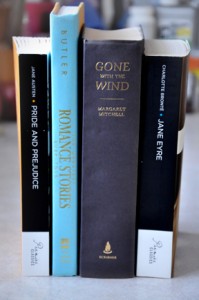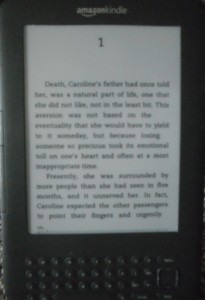Narrative Voice, Characterization and Reading To Improve Writing
 Novelists should always be willing (and eager) to improve their craft. Writing fiction is difficult and complex because of the many complicated aspects (narrative voice, writing style, imagery, plot lines, characterization, setting etc).
Novelists should always be willing (and eager) to improve their craft. Writing fiction is difficult and complex because of the many complicated aspects (narrative voice, writing style, imagery, plot lines, characterization, setting etc).
Whether you’re a bestselling author or an aspiring novelist, one of the best ways to improve your writing is by reading well-written novels. Read books and dissect them. Ask yourself, What makes this particular novel great? What makes it not-so-great?
William Faulkner once said, “Read, read, read. Read everything – trash, classics, good and bad, and see how they do it. Just like a carpenter who works as an apprentice and studies the master. Read! You’ll absorb it. Then write.”
Currently, I read at least 100 books a year, mostly novels. I enjoy immersing myself in a compelling story with believable, relatable characters, rich imagery. These are the types of novels I aspire to write.
I read at night before bed and often first thing in the morning. I read manuscripts that are submitted to my publishing company. I enjoy a variety of contemporary novels and often read a classic or two here and there.
When I was a newbie, my editor recommended I read several books, then asked me to figure out what each book’s strength was. The first novel on the list was a book entitled “Picture Perfect,” by Jodi Picoult. (Spoiler alert) It’s a novel about spousal abuse. Picoult brilliantly creates an abusive – yet sympathetic – husband. So much so that when the abusive husband is begging his wife to return, I said out loud, “Oh, give the poor guy another chance.” I eventually came to my senses, but I realized that it was the author’s brilliant characterizations that made me want the abused wife to return to her abuser.
The following list is recommended for helping with character studies and narrative voice. It is, by no means, definitive. There are literally thousands of great novels with excellent characterizations.
Gone With the Wind by Margaret Mitchell (I own a hard copy but downloaded this on Kindle for .99). This has remained my favorite book of all time and I read it every few years. Mitchell only wrote one novel but it is the quintessential novel, especially if you’re writing romance. This book has the whole package: excellent, crisp writing, compelling story, intricate, believable and brilliant character studies. (More on the “Whole Package” novel in my next post.)
My Sister’s Keeper by Jodi Picoult: The winner of numerous awards, this novel is filled with brilliant character studies and narrative voices. The movie version was okay, but the book is much better (although like most of Picoult’s books, the ending is unexpected).
The Complete Stories by Flannery O’Conner: Just pick any of the short stories in this thick book and you’ll learn from O’Connor, who was a master of crisp, edgy writing and excellent characterizations.
Brideshead Revisited by Evelyn Waugh: A classic. Brilliant characterizations.
Death Comes for the Archbishop by Willa Cather: (read my review here) Also a classic.
The Lottery (short story) by Shirley Jackson (available free online) Excellent character studies.
Jewel by Bret Lott: This novel’s strength is the main female protagonist’s believable, moving, well-developed character.
A Farewell to Arms by Ernest Hemingway: This is my personal favorite of Hemingway’s novels. In this atypical war romance, I think the author’s strength is in the characterizations of the two main characters. I saw the movie with Rock Hudson and Jennifer Jones first, but the book captures their characters better than the movie. (Currently .99 on Kindle)
Do you have any favorite books or short stories that are strong in narrative voice and characterization? If so, please feel free to comment below.
Next month: The Whole Package and Reading Books that encompass great characters, unpredictable compelling stories AND rich, crisp writing.
Copyright 2013 Ellen Gable Hrkach










